A recent presentation at Fordham’s cybersecurity conference last month helped illustrate why.
“When I asked the CEO of a major movie company recently, ‘What’s the craziest thing you can imagine will happen in the next two to three years?’ he said, ‘We will have a full cinematic feature starring zero actors, zero cinematography, zero lighting, and zero set design,” said Josh Wolfe, co-founder and managing director of Lux Capital at a keynote speech on Jan. 10.
“It will all be generated.”
As an example, Wolfe, whose firm invests in new technologies, screened a fan-made movie trailer that used AI to imagine what Star Wars would look like if it had been directed by Wes Anderson.
A Threat to Storytelling
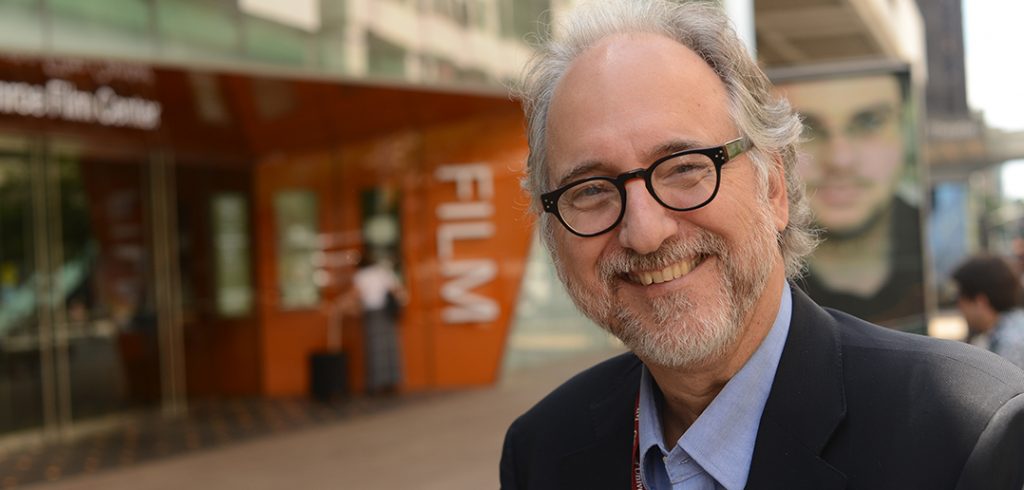
James Jennewein, a senior lecturer in Fordham’s Department of Communication and Media Studies whose film-producing credits include Major League II, Getting Even with Dad, and Stay Tuned, said the prospect of AI-powered screenwriting is deeply concerning.
He called storytelling “soul nourishment” that teaches us what it means to be human.
“We’re still watching films and reading books from people who died centuries ago, and there’s something magical about an artist digging into their soul to find some kind of truth or find a unique way to express an old truth, to represent it to the culture, and I don’t think that AI is going to help make that happen more,” he said.
In many ways, AI has already infiltrated movies and TV; major crowd scenes in the show Ted Lasso were created using AI tools, for example. This summer, the directors of Indiana Jones and the Dial of Destiny used AI to render the nearly 80-year-old Harrison Ford to look like he was in his 20s.
The ability to use fewer actors in a crowd scene is obviously concerning to actors, but Jennewein said the strike was about more than just saving jobs–it’s about protecting creativity.
“We don’t want AI to create the illusion that something is original when it really is just a mashup of things that have been created before,” he said.
“Flesh-and-Blood” Films Coexisting with AI
Paul Levinson, Ph.D., a professor of communications, saw first-hand what AI can do to his own image and voice. A 2010 interview he did was recently altered by the journalist who conducted it to appear as if Levinson was speaking in Hindi. But he is less concerned about AI taking over the industry.
He noted that when The Birth of a Nation was first screened in 1915, it was predicted that it would kill off the live theater.

Levinson predicted that in the future, the majority of what we watch will be AI-generated, but there will still be films that are made with live human actors. Just as theater co-exists with live movies, traditional movies will co-exist with AI content.
“I think we are going eventually to evolve into a situation where people aren’t going to care that much about whether or not it’s an AI-generated image or a real person,” he said.
Levinson acknowledged that AI could inflict real harm on the livelihood of actors and screenwriters, but said an equally important concern is whether those who work with AI tools get the credit they deserve.
“I’m sure people are going to think I’m out of my mind, but I don’t see a difference, ultimately, between a director who is directing actors in person and somebody who understands a sophisticated AI program well enough to be able to put together a feature-length movie,” he said.
“What could ultimately happen as AI-made films become more popular, is that films that are made with real flesh-and-blood actors will advertise themselves as such, and they’ll try to do things that maybe AI can’t quite yet do, just to push the envelope.”
]]>Auster joined the Department of Communications and Media Studies as a visiting assistant professor in 1996. He was appointed full professor in 2015, a position he held until he retired in 2020. He served as associate chair of the department at the Rose Hill campus from 2002 to 2003, and from 2003 to 2008 at the Lincoln Center campus.
Auster was born in Brooklyn, grew up in the Bronx, and graduated from City College in 1961. He earned a Ph.D. in history from S.U.N.Y. Stony Brook in 1981, and taught at Brooklyn College and SUNY College at New Paltz from 1982 to 1995 before joining the Fordham faculty.
At Fordham, he focused on film and television. He published several books, including American Film and Society Since 1945 (ABC-Clio, 2018), thirtysomething: Television, Women, Men and Work (Lexington Books, 2008), Turn On, Tune In… Television and Radio in the U.S.A. (Altair Publishing, 1994), How the War Was Remembered: Hollywood and Vietnam (Praeger, 1988), and Actresses and Suffragists: Women in the American Theater, 1890-1920 (Praeger, 1984).
In published papers and interviews, Auster weighed in on subjects as diverse as Seinfeld, Frank Sinatra, and the differences between spies in movies and in real life.
In 1999, he was instrumental in launching the Sperber Prize, which is given to authors of biographies and autobiographies of journalists. He served as chairman of the award committee for 20 years.
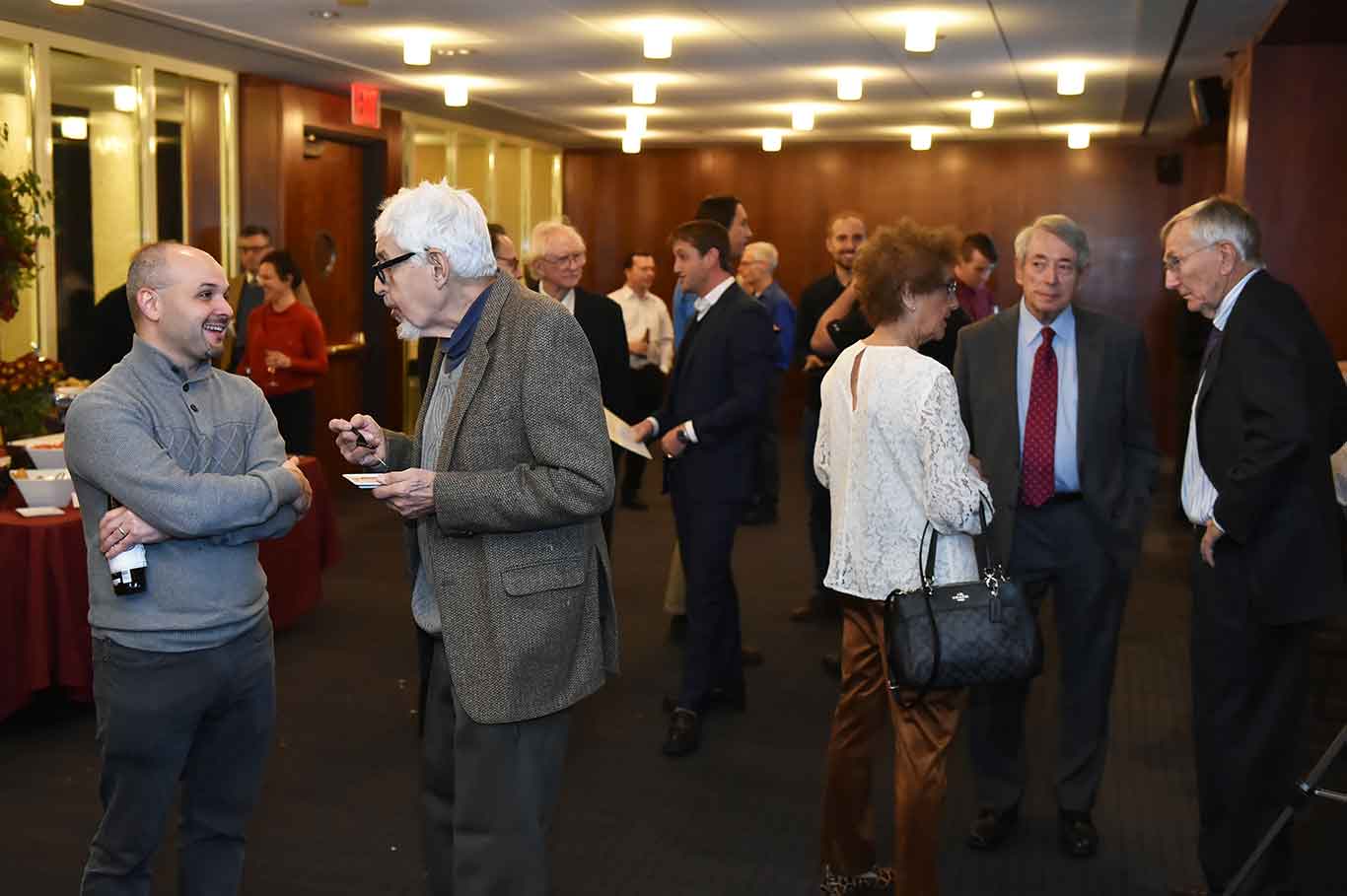
Brian Rose, Ph.D., a professor of communications who was director of the award following Auster, called him a treasured colleague whose good judgment and empathy were valued on both campuses.
“He brought a tremendous sense of intellectual energy and wide historical background to his media classes, which clearly engaged several generations of students at Fordham. Al’s warmth, generosity, and good humor will be sorely missed,” he said.
Jacqueline Reich, Ph.D., a former professor of communications and media studies who is now dean of the School of Communication and the Arts at Marist College, echoed Rose and said that Auster was fundamental in bringing the Sperber Prize to Fordham.
“His tireless advocacy and devotion to the program was so appreciated by the Sperber family in Anne Sperber’s memory,” she said, noting that he was a charming, gentleman and devoted teacher.
“One of my favorite quotes about him from a student evaluation was “‘I wish he was my grandpa.’”
In 2008, Auster organized, along with Paul Levinson, Ph.D., a conference dedicated to the HBO show The Sopranos. Levinson called him a “one-of-a-kind professor and human being who had a heart of gold, a smile that would light up a room, and an encyclopedic knowledge of everything he taught and talked about.” Levinson recalled asking Auster at the last minute to serve as an associate chair of the department at the Lincoln Center campus. Auster didn’t hesitate, he said.
“I would call him anytime I had an issue that needed discussion, and he always took the call, including at night and weekends. I knew I’d miss him when he retired, and I did. I know now I’ll miss him very much more,” he said.
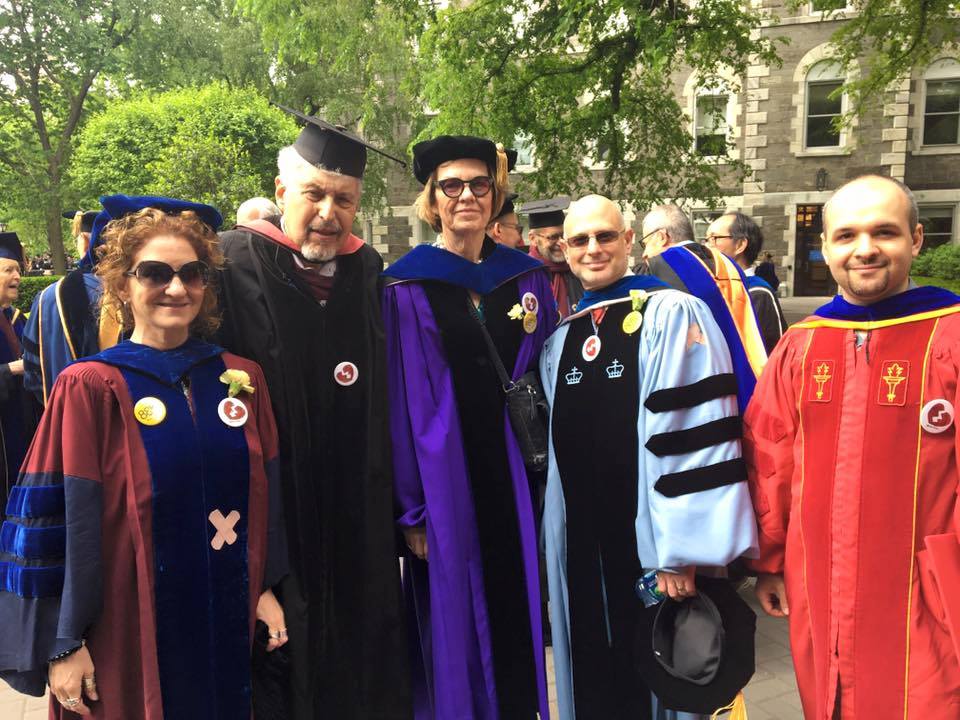
Photo courtesy of Gwyneth Jackaway, left
Thomas McCourt, Ph.D., a retired professor of communication and media studies, credited Auster with making him feel welcome when he first moved to New York City and was feeling out of his league.
“He had a wonderfully dry sense of humor and keen sense of the absurd. We spent hours and hours talking about jazz guitarists!” he said.
“I learned that a number of junior faculty in the department held an informal poll as to which senior colleague they would like to accompany on a cross-country road trip, and Al was the hands-down winner because he had so many great stories to tell. Al was the definition of a mensch.”
In 2016, Auster was recognized for his service at the University with a Bene Merenti medal. At the ceremony, he was lauded for being “a classic New Yorker, exemplifying the wit and heart of the city.” His citation praised him for his significant contribution to his field and to Fordham:
“Dr. Auster’s significant body of work details the history and impact of film and television on the American landscape. His wide-ranging interests are reflected in his many books and articles that have helped shape critical debates on how politics and media interact. In his studies of film and TV programming focusing on the Vietnam War, Dr. Auster has portrayed the complexities and contradictions of creators as activists in an industry typically focused on ratings and financial results,” the citation read.
“Through the years, numerous students have attested to the spirit of inquiry and openness that distinguishes his teaching. His classes provide a broad sense of context in which to address the fundamental questions of philosophy and ethics in past and present media. In both his life and work, Dr. Auster reflects the best aspects of Fordham and New York City.”
Auster’s wife Susan Hamovitch said he had recently begun working on a memoir that he called bubbenmeises, an intentionally misspelled Yiddish word that he defined as “Referring to a number of meanings: a false story, a story that is so eccentric as to be meaningless, or a story intended to divert from the real story. But are more than that because they have defined me [him]and my family.”
In the course of working on it, he’d realized that he was profoundly affected by the Holocaust, which resulted in the murder of his grandmother, aunts, and uncles. After graduating from City College, he worked in radio, for the Canadian Broadcasting Company and WBAI in New York City. It didn’t pay well enough though, she said, so he reluctantly went back to school to earn a Ph.D. in history. He would become a student of Hitler, Stalin, and the Jim Crow era of the Deep South, she said in remarks she delivered in a eulogy.
“His jam though, was to probe historical themes as contemporary American culture, mainly movies, portrayed them,” she said.
“How did film portray the Holocaust? The War in Vietnam? Jewish mores? For his graduate thesis, the question was, which of Hollywood’s stars were diehard suffragists?”
Auster’s life can be summed up as passionate and emotional, she said.
“He breathed the history of this country, from the Suffragist movement to race relations, from John Ford to Jerry Seinfeld, with pride, annoyance, rage and love, I suspect due to the bubbenmeises he’d lived through,” she said.
“He approached his end as he had his life, with kindness, discipline, and a sense of responsibility. He was an extraordinary man.”
Funeral services will be held Friday, April 1, at 11 a.m. at the Kerhonkson Synagogue in Kerhonkson, New York. The service will be streamed live on Zoom. His wife Susan Hamovich will be sitting shiva on Sunday, April 3 and a shiva minyan at 3 pm. Anyone who would like to share memories of professor Auster are asked to e-mail them to Susan at [email protected]. In lieu of flowers, the family asks that you consider making a donation to the Met Council on Housing and/or to Kolot Chayeinu.
]]>The class of honorees chosen by PRNews last month represent women trailblazers in the field who think outside the box and who demonstrated significant passion for their work.
Bob Howe, assistant vice president for communications and special adviser to the president who has worked with Vergel since she started at Fordham in 2007, said the honor was extremely well deserved.
“She’s just stellar,” he said. “She sets the kind of tone that I like for collegiality and for inclusiveness in the department. And I trust her implicitly. Any boss would be lucky to have somebody like Gina as their right hand.”
Vergel oversees a shop of eight people, including the Fordham News team and the University’s social media director. She started at Fordham as a staff writer; around 2010, she began her work in media relations, pitching Fordham’s stories and faculty expertise to local and national outlets.
Under her direction, the University averages more than 10,000 global media mentions per quarter, with faculty appearing in national and local publications such as The New York Times, Wall Street Journal, New York Post, and CNN.com, and on television and radio stations including NY1, MSNBC, and WNYC.
Vergel credits her time as a staff writer with helping her develop relationships with professors whom she would later pitch to the media.
“That is the best way to get to know faculty, administrators, and even some students,” she said, noting that she’s grateful she covered so many topics and departments as a News staffer. “One day, you could be interviewing a mathematics professor, the next day, a biology professor. That’s how you build connections.”
Many of the faculty members are just as grateful to her—both for the media placements and her guidance.
“I think she’s fabulous. First of all, she’s an incredible powerhouse with making connections,” said Paul Levinson, Ph.D., professor of communication and media studies. “I really consider myself lucky that Fordham has someone with Gina’s level of commitment and professionalism, because it’s helped me a lot.”
Mark Conrad, an associate professor of law and ethics, said that Vergel’s success with media placements has improved Fordham’s profile.
“She added a degree of urgency, pizzazz, and I think, a really good working strategy with faculty who want to get to be noticed in the media,” he said. “[Fordham is] in the same city as Columbia and NYU, and chances are most media tended to go to them, because of the name recognition.” But thanks to Vergel’s know-how and connections, he said, reporters regularly seek out Fordham experts.
Vergel attributes her success, in part, to finding the right angles and the right reporters.
“With the media landscape, reporters are so overworked right now, having to be on 24/7,” she said. “So trying to get their attention can be difficult, and so I try to be very mindful of that, because I was a reporter. So I’m not sending blanket pitches to just a huge list.”
Before Fordham, Vergel was an award-winning reporter for Home News Tribune and Ridgewood News in New Jersey, her home state, where she also reported for radio stations WRNJ and WGHT. She earned a B.A. from William Patterson University and a master’s in organizational leadership from Fordham’s Graduate School of Education.
Christina Greer, Ph.D., associate professor of political science, said that Vergel brings both an easygoing attitude and a professional skillset to the job.
“She’s fun. I’ve got 1,000 different things going on, and so to work with someone who has an easygoing temperament is great but also, she knows her job really well,” said Greer, who regularly appears on stations such as MSNBC and WNYC. “All of our interactions have just been clear communication, positive energy, high energy.”
Greer said that Vergel’s work not only benefits the University community, it also brings academic expertise to people who might not have gone to college.
“It’s great for alumni because they like to see their university represented in national and international outlets,” Greer said. “It’s great for recruiting because I get lots of people on Twitter who say, ‘I can’t wait to apply to Fordham because if I can get you as a professor, this is awesome.’ And also, not everyone is fortunate enough to go to college …. So whenever I do outward facing stuff, I view it as regular people getting to spend five or 10 minutes with a professor.”
While Vergel still does a lot of pitching in her current role, she’s also very involved with communications strategy decisions.
“For a lot of the news, even a lot of marketing-type decisions, I’m brought in to consult on different strategies that we’ll take, how we put word out there via social media,” she said. “You have your hands in everything that has to do with telling Fordham’s story.”
Howe said Vergel’s a natural storyteller who is gifted in finding stories that appeal to different populations. She’s also been essential, he said, to the University’s efforts to increase diversity, equity, and inclusion.
“She has been good at helping me and [the Department of Alumni and University Relations], in thinking through how we approach issues of race, especially from a Latina perspective,” he said.
Vergel said she’s incredibly grateful for the recognition from PRNews as she’s used to being “behind the scenes.” And as the daughter of immigrants, she’s especially proud of what she’s achieved.
“I feel it was in my parents’ wildest dreams. When they came to this country from Colombia in 1970, they had to do menial labor. My father was a custodian and my mother worked in a factory. They wanted to have their children here for us to have opportunities. They’ve just been incredibly proud of us,” she said.
]]>“Touching the Face of the Cosmos: On the Intersection of Space Travel and Religion,” was inspired by the 2015 anthology of the same name, that was edited by Paul Levinson, Ph.D., professor of communications.
In one of the day’s panels, Levinson, fellow Fordham communications professor Lance Strate, Ph.D.,and novelists Alex Shvartsman and David Walton sat for a wide-ranging discussion, “Science Fiction Looks at Space Travel and Religion.”
“As far as we can tell, we alone not only adapt our environment, we change our environment,” said Levinson. “There’s one form of literature that addresses those quintessentially human activities. That is science fiction.”
Panelists discussed works they felt most profoundly melded issues of faith and science fiction. For Walton, C.S. Lewis’ Space Trilogy (Scribner, 1996) —is the most provocative illustration of the intersection of faith and science. Shvartsman cited Stranger in a Strange Land, (Ace, 1987) by Robert A. Heinlein. The main character comes back from to Earth, having been raised by Martians.
“He’s been completely removed from human culture, so the book is seeing humanity through his eyes, and how he essentially starts a brand-new religion. It’s about what a religion is, and how one might be started, which I feel is both fresh and radical.”
Strate made a case for H.G. Wells’ The War of the Worlds, in part because Wells was a student of Thomas Henry Huxley, who was known as “Darwin’s bulldog.” In the end of the story, when aliens are felled by disease, Wells speaks of “the humblest things that God, in his wisdom put upon this earth.” Strate said this was originally a reference to natural selection. In the 1953 film adaptation of the story, however a priest who is acting as a peace envoy is vaporized; an act that is treated as the aliens’ first—or original—sin. The same line of dialogue thus takes on a much more religious tone when they perish at the end.
“Religion is trying to find answers to core questions like ‘Who I am?’, ‘Where did I come from?’, ‘What is my purpose in life?’, and ‘Where are we going?” said Walton.
“These are the stories that science fiction writers grapple with whether they explicitly deal with religion or not.”
As for the genre’s effects on religion, when Star Wars: The Last Jedi came out, Strate noted that an op ed appeared in the magazine Tablet that criticized it as “Reformed Jedi-ism,” a none-too-subtle jab at Reform Judaism.
“There was something very positive that anyone could be a Jedi and be in touch with the Force. It was missing from all of Lucas’ work, but at the end of the last Jedi, they suddenly introduced this idea,” he said.
In many ways, Shvartsman said, science fiction writers are advance scouts for philosophers and religious leaders.
“If we develop interstellar flight, and humanity does spread to the stars, what will happen if the Messiah comes? Will he go around collecting people off those planets, or are people who leave Earth screwed? If we meet aliens and they’re intelligent, do they have souls?
“These are all really complicated questions, and the good thing for us science fiction writers is we don’t have to answer them. That’s not our job. Our job is to ask the question. But asking the question will give everyone else time to consider them and come up with eventual answers before the science catches up with the fiction.”
The conference also featured panels discussions “Triangulating Creed: Identifying Memories that Form Values (A Creed), which Portray a Future” and “What Little Children See in Space,” and a keynote speech, “Would You Baptize an Extraterrestrial?” by Guy Consolmagno, S.J., director of the Vatican Observatory.
]]>But that year was a heady one, for both McLuhan and for a nation that would soon undergo profound cultural and political changes, panelists said on Oct. 13 at Fordham.
The University and New York City served as twin incubators for the Canadian philosopher and new media scholar’s always evolving theories, said McLuhan’s son, Eric. “It was a magical year,” he said. “Everything we predicted in ‘67 or ‘68 has come true.”
Global Interconnectedness
Eric McLuhan joined two of his father’s protégés—Fordham communication professors John Carey, Ph.D., and Paul Levinson, Ph.D.,—at the Lincoln Center campus for a look-back, on the 50th anniversary of McLuhan’s tenure at the University. He referenced his father’s conception of the global village, a term the elder McLuhan coined to denote the interconnectedness of people throughout the world via ever-evolving technology; i.e., what became known decades later as the World Wide Web.
That particular academic year, McLuhan and his team of collaborators—son Eric, University faculty member John Culkin, S.J., the painter Harley Parker, and the anthropologist Ted Carpenter—conducted seminars, showed films, and assigned independent projects to students that would echo and expand on McLuhan’s thinking. His ideas about technology and society were most conspicuously outlined in his aphoristic declaration that “the medium is the message.” For the students and their mentors, the semester amounted to a theater of experimentation, exploration, and prognostication.
Eric McLuhan suggested that his father’s prescience continues to resonate today, 37 years after his passing. It has never been more evident during an epoch when “fake news,” “media bubbles” and “social media” dominate the discourse, panelists agreed.
A Million Isolated Villages
Carey, who studied under McLuhan, recalled an instance when McLuhan said his theories were works in progress. “He said, ‘Don’t take everything I say as gospel. A lot of what I say I’m just testing the waters and I may disagree with myself a week later,’” Carey said.
He suggested that McLuhan would likely have revised his conception of the global village given the ubiquity of the internet, which McLuhan had foreseen some 30 years before its advent.
“He talked about the fact we were in a global village, that essentially we were all getting the same thing and that meant we were one village even though we were the world,” Carey said. “I think the Internet has totally shattered that. We’re not in a global village anymore. We’re in a million isolated villages of our own choosing. And I think he would observe that were he here.”
Inside Looking Out
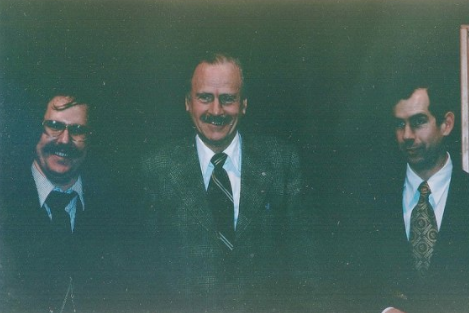
(From McLuhan in an Age of Social Media)
Although McLuhan’s tenure in the media capital of the world was short, it shaped him profoundly, his son said. From his home base in Toronto, McLuhan was able to peer into the United States regularly and see his neighbors “more clearly than the people involved in it could see themselves.”
“Now he found himself on the inside looking out, and he learned a lot,” he said.
Levinson, the author of Digital McLuhan and McLuhan in an Age of Social Media (the latter first published in 1999), said McLuhan was always probing. He was a person who declined to make value judgments, preferring instead to keep exploring.
During a Q and A, Levinson was unequivocal in response to a questioner asking who, today, has inherited McLuhan’s mantle as a far-sighted inquisitor.
“It’s ipso facto impossible for there to be another McLuhan,” Levinson said.
–Richard Khavkine
]]>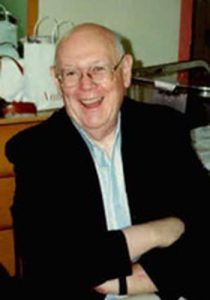
Fordham University mourns the passing of Frank G. M. Corbin, FCRH ’50, of Pelham, New York, a public relations professional and adjunct professor who was a beloved mainstay of Fordham’s communications faculty for 59 years. He died on Oct. 17 at the age of 90.
“We’ve lost someone who was very near and dear to the department, and to Fordham,” said Lance Strate, PhD, one of many professors in the Department of Communication and Media Studies who knew him. “He was a consummate professional in public relations and as a teacher. He was really a very kind and considerate person who was always interested in finding the common ground with the person he was interacting with.”
Corbin, owner of Corbin Communications Counsel in Pelham, was a 1943 graduate of Cardinal Hayes High School and a veteran of World War II and the Battle of the Bulge. He also belonged to the group of Fordham alumni that honored their former professor, Edward A. Walsh, by creating a scholarship and a media laboratory—located on the Rose Hill campus—in his name, Strate said. Corbin sat on the committee that chose the Walsh Scholarship recipients.
“He never wavered in his loyalty to Fordham and never stopped giving back for as long as he was able to,” Strate said.
While his career was successful, teaching at Fordham was “his true passion,” according to Corbin’s obituary. For decades, ending in 2012, he taught a popular course in public relations that he was clearly proud of, colleagues said. “I don’t think I’ve ever known a human being who loved teaching as much as Frank Corbin,” said communications professor Paul Levinson, PhD. “He loved being part of the academic world, and he loved being part of Fordham.”
Corbin emphasized ethics in the course, said another colleague, communications professor Robin Andersen, PhD. He was a longtime reader of The Catholic Worker who embraced Fordham’s ethos of social justice, as well as its philosophy of cura personalis, which was invoked at his funeral on Oct. 20, she said.
“Fordham and its mission really defined Frank,” Andersen said.
Corbin’s family asked for donations in lieu of flowers to be sent to the Frank G. M. Corbin Scholarship Fund, Fordham University Development Department, c/o Michael Boyd, Rose Hill Campus, Bronx, N.Y., 10458. Gifts may also be made online.
“His strength was unwavering, his intellect was rigorous, and his selfless nature was to be admired,” his obituary said. “He was well loved, respected, and will be missed by all who knew him.”
Corbin is survived by his two children, Catherine and Peter; his daughter-in-law, Annette; and his two grandchildren, Kaitlyn and Caroline.
]]>
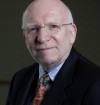
Oil Prices & Airline Profits: A big story in 2015 will be the continued fall in the price of oil. Brent crude, $115/barrel in June 2014, is now down to $60 and will likely fall to around $50 next year. The impact is perhaps most visible at the pump where gasoline is now below $2/gallon in some parts of the country. The effect on the U.S. economy has been a stimulus far more effective than any that government could provide: reduced production costs for businesses and significantly greater disposable income for consumers. One major beneficiary will be the airline industry. Fuel accounts for 25-30 percent of airline costs, the industry’s single biggest expense. Lower oil prices will add over $6 billion to airline profits worldwide in 2015. However, fares are unlikely to decline on most routes since the airlines are already filling their planes and have little incentive to discount prices to sell the remaining seats.
-Frank Werner, associate professor of finance and business economics
Net Neutrality No, Faster Streaming Yes
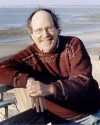
Net Neutrality No: The big social media development in 2015 will be the increase in original television watched by streaming, adding to the success of House of Cards, Orange is the New Black, Marco Polo, and The Peaky Blinders on Netflix and Alpha House on Amazon. Viewing unique to smart phones, tablets, laptops, and smart television will continue to compete with and supplant traditional cable and network offerings. Net neutrality won’t be enacted, insuring even faster streaming and better viewing for millions of consumers.
-Paul Levinson, professor of communication and media studies

Human Rights: What we have witnessed during the latter half of this year is a revolutionary transformation in the way we think and act in regard to race-based injustice. I hesitate to call the protests, actions, and community mobilizations that have occurred in response to Mike Brown’s murder in Ferguson and Eric Garner’s death in Staten Island “trends”. As a young woman activist recently told me, “Mike Brown is the catalyst and Ferguson the site” that highlights the pervasive nature in the United States of state violence against people of color (who are usually black and poor), and an enduring anti-black ideology. People of all class and race backgrounds have come together to call out these inhumane practices. This is a new movement. This is a human rights issue, not a matter of partisan politics. We will see this movement for justice continue into 2015 and beyond. And, it will be largely led by the courageous and smart organizing of black youth who refuse to be silenced or see anyone refused his or her full rights of citizenship.
-Aimee Meredith Cox, assistant professor of African and African-American Studies
Pope Francis in the Land of the Free
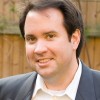
A Papal Appeal: This coming Earth Day (April 22nd) Pope Francis will release a much-anticipated encyclical on ecology. I suspect his visit to the United States, which comes only five months later, will focus on ideas from that document. My sense is that he will call Americans–especially given our status as trend setters when it comes to the world’s economy–to radically rethink our consumerist lifestyles and addiction to technology. These twin forces are destroying both the world’s ecology and what the Pope will refer to as “human ecology.” For decades, Catholic social teaching has connected the health of the human heart or spirit with the health of the earth. I anticipate that the Pope will call on Americans to resist the disconnected lifestyle that consumerism and technology produce, and instead live a life concerned with and connected to the health and flourishing of those in need and, indeed, of the whole planet.”
-Charles Camosy, associate professor of theology
Apple Watch Drives Wearable Tech
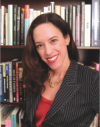
Design and Tech: Fashion and fashion law are all about trends, and 2015 will be no exception. The wearable tech sector will continue to grow, generating a steady stream of patent applications and licensing deals between designers and tech companies, and the expected release of the Apple watch is likely to boost interest still further. Data privacy problems will remain critical for online retailers and are on the horizon for wearable tech companies as well. And social issues, from environmental sustainability and working conditions to gender-specific workplace dress codes to ruffled feathers over Native American headdresses and other forms of cultural appropriation, will continue to be topics of conversation. In other news, following a recent legal settlement, New York Fashion Week will leave Lincoln Center after February. Enjoy the spectacle now!
-Susan Scafidi, academic director for the Fashion Law Institute
The Supreme Court has a Big Decision to Make
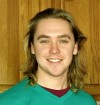
A Presidential Legacy: In the spring of 2015 the Supreme Court will hear another challenge to the Affordable Care Act (ACA). The judicial question revolves around the extension of federal subsidies to individuals in the 36 states that have not established health care exchanges. Plaintiffs argue that the government avoided establishing federal exchanges in the ACA, encouraging individual states to establish them instead. Contrarily, the government argues it intended to establish federal exchanges, but still encouraged states to join them in doing so. As a result, the Court has a serious decision to make. It could deconstruct the signature piece of legislation passed by the executive and legislative branches in the last six years, which would likely cement itself to critics as a politicized institution and not an objective appellate judiciary. It could also refrain from any decision with major impact. As the Obama Presidency draws to a close, a decision on this case could significantly affect his legacy.
– Bobby James DeNault, FCRH 2016, political science major
Restorative Justice and Transformative Power
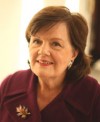
Fixing What’s Broken: Next year we’re going to see much needed attention on restorative justice that focuses less on punishment and more on repairing harm for all involved because of crime. Fordham collaborated on an exceptional restorative justice consultation in November 2013 that brought leadership in the faith community and justice officials together with leaders from around the world who have experienced restorative justice’s transformative power. Everyone there agreed that the U.S. justice system is broken, particularly for people of color. We are inhumane with the way we handle justice. Right now the Beck Institute is working with judges, lawyers, social services and congregations in Westchester who have committed themselves to doing something about this. Currently there isn’t a program of restorative justice in the county; a tragic omission, particularly for youth. Judge George McKinnis has provided the leadership, establishing a 501c3 for Community Restorative Justice.”
-Anita Lightburn, professor of social work and director, Beck Institute on Religion and Poverty
— Janet Sassi
]]>
The University’s more active Twitter users spring from the communication and media studies department, though faculty in other disciplines are delving in as well.
All regular faculty users interviewed have one thing in common: they warily tested the waters before finding their comfort zone.
To a non-digital native, Twitter can seem like an unwieldy, hungry beast, or worse, a massive party where you can’t find your friends. Interviews with six professors demonstrate how they manage to both find friends and feed the beast.
Paul Levinson, Ph.D., professor of communication and media studies

 @paullev
@paullev
With more than 6,300 followers, Levinson tops the heap in terms of audience. It’s not surprising, considering that Levinson wrote New, New Media (Pierson, 2009, 2013). The Chronicle of Higher Educationhas named him one of “Twitter’s Top Ten High Fliers.” As a direct disciple of the late media ecology theorist Neil Postman, who taught at NYU, Levinson approaches the medium with an anthropologist’s eye.
“As John Dewey said, you learn by doing. You get to know things best when you’re inside them, and that’s a crucial point. The best way to learn Twitter is to take time to learn it and not take advice from someone else. Twitter makes it easy for any voice to be heard, and a university has a lot of voices. In the past, the only way that things got out to the public was if some gatekeeper passed approval, like an editor or producer. This was a system intended to keep out low-quality work, but often it kept out high-quality. Twitter is a very good corrective to that. It makes me think of the line from Thomas Gray’s Elegy Written in a Country Churchyard: ‘Full many a flower is born to blush unseen.’ I’m concerned about these flowers wasting their time in the desert. Twitter allows them to be seen.”
Lance Strate, Ph.D., professor of communication and media studies

 @lancestrate
@lancestrate
Strate got onto Twitter in the very early days. Another disciple of Postman, Strate’s Twitter circle includes scholars and practitioners of media ecology. Though he uses the medium proficiently for specific interests, he remains acutely aware of Twitter’s pitfalls.
“From a critical point of view, Twitter raises a lot of questions. What is the point of this medium? What is it doing? What is it undoing? I see it as abbreviated telegraphic discourse. Electronic media in general undermines the concept and practice of literacy as we’ve known it. It discourages engagement in long, measured discourse and deep reading, and it’s not about following a train of coherent thought. It often trivializes what you’re dealing with. And while it’s common to hear complaints about the ‘What-I-had-for-lunch’ tweets, more importantly, Twitter turns political discourse into slogans, quips, and sound bites. We lose the capacity for careful reasoning and clear thought. That naturally leads to more conflict-oriented communication. So, how do you evaluate that? We evaluate a tweet by how clever and economical it is, how many people it goes out to, and how often it gets re-tweeted. None of that speaks to how well it informs us, educates us, or uplifts us. You know something’s wrong when every television show has a ‘like us on Facebook’ and a ‘follow us on Twitter.’
Beth Knobel, Ph.D., assistant professor of communication and media studies
 @bethknobel
@bethknobel
 Knobel spent nearly 14 years as a journalist reporting on Russia, nine of those years with CBS News (@cbsnews). She still comments as an expert in Russian affairs and tweets about it frequently, as well as on the ever-shifting media landscape. Her Twitter followers are influential experts in their fields.
Knobel spent nearly 14 years as a journalist reporting on Russia, nine of those years with CBS News (@cbsnews). She still comments as an expert in Russian affairs and tweets about it frequently, as well as on the ever-shifting media landscape. Her Twitter followers are influential experts in their fields.
“As a professor of communications it’s important to practice what I preach. Rather than mouthing off I try to use Twitter to add something to the debate going on in the profession. People appreciate it the most when it’s used to spread valuable information and not just self-promotion. I have specialized interests, but I try to tweet things that are interesting to a general public. I tweet what I know so that I’m comfortable as to my decision to add to a discussion or start one, rather than just to say what’son my mind. For news,Twitter is a double-edged sword. On one hand it encourages people to learn more if they desire by linking to articles, but I have students who follow the New York Times (@nytimes) and they think they’re informed. Unless you take that extra step you don’t get more than 140 characters. While it’s great for spreading headlines, Twitter takes action to get real knowledge.”
Christiana Peppard, Ph.D., assistant professor of theology
 @profpeppard
@profpeppard
Peppard uses Twitter as a way to expand on her niche area of research: environmental ethics with a specialization in water. She is a relative newcomer to the medium and sees it as another facet of being a public intellectual.
“I was encouraged to join Twitter about a year ago. It’s been a process of discernment, because initially I wasn’t sure if I wanted my voice out there. Recently, I realized that it’s a way for me to connect with other folks who are analyzing or aggregating information about water ethics and science. I find the 140 characters facilitate an economy of language, even like a form of poetry. I like to have a baseline of scheduled tweets (from TweetDeck). Sometimes I send out nice, interesting quotes that aren’t necessarily linked to any particular news hook. For example, when I was reading the Origin of the Species and The Descent of Man, I set up a series of ‘Daily Darwin’ quotes that were funny, suggestive, and sometimes absurd. People seem to like that. One of the things I continue to explore is how to render my Twitter voice both personal (reflective of how I proceed in the world) and professional. And that’s where the humor comes in. It humanizes my professional work.”
Robert Blechman, Ph.D., adjunct professor of communication and media studies
 @rkblechman @rkbs_twitstery @twistery
@rkblechman @rkbs_twitstery @twistery
Blechman stands out among tweeters beyond Fordham’s gates in that he has done the seemingly impossible: he wrote an entire novel on Twitter. As a media ecology theorist, he believes that the establishment often reacts to a new medium with trepidation. His response was to explore the Twitter medium through a familiar form, the mystery novel.
“I started writing [my novel]in Twitter as a literary experiment, which I believe was the first real-time attempt at Twitter fiction. There were some efforts to publish pre-written pieces in 140 character chunks and, of course, many Japanese cellphone novels. Though I usually posted the novel tweets in real time at 9 a.m. and 9 p.m., seven days a week, I sometimes scheduled my tweets via a Twitter automation service, SocialOomph, to update the story when I couldn’t be at a computer. At times I’d reach out to [my followers]through my main character. For example, if my detective faced a difficult puzzle or was trapped by an adversary, he’d use his Twitter feed to solicit suggestions, asking ‘How do I get out of this?’ I’m now tweeting a sequel three times daily at @Twitsery.”
Mike Plugh, GSAS ’08, lecturer in communication and media studies
 @mikeplugh
@mikeplugh
Plugh teaches digital media and cyberculture. He tweets about the media, culture, and sports—especially his frustration with the Knicks.
“I came to Fordham because it is the unofficial home of media ecology. I only say that because we probably have the largest collection of former Neil Postman (@postmanquote) students under one roof. Then of course there’s the affiliation of the late [communication theorist]Marshall McLuhan (@marshallmcluhan). The way we try to think about any emerging tech like Twitter is how it fits into the existing culture and how does it change democracy and institutions? This is something very special about Fordham (@fordhamnotes).”
]]>The University’s more active Twitter users spring from the communication and media studies department, though faculty in other disciplines are delving in as well.
All regular faculty users interviewed have one thing in common: they warily tested the waters before finding their comfort zone.
To a non-digital native, Twitter can seem like an unwieldy, hungry beast, or worse, a massive party where you can’t find your friends. Interviews with six professors demonstrate how they manage to both find friends and feed the beast.
Paul Levinson, Ph.D., professor of communication and media studies
 @paullev
@paullev
 With more than 6,300 followers, Levinson tops the heap in terms of audience. It’s not surprising, considering that Levinson wrote New, New Media (Pierson, 2009, 2013). The Chronicle of Higher Educationhas named him one of “Twitter’s Top Ten High Fliers.” As a direct disciple of the latemedia ecology theorist Neil Postman, who taught at NYU, Levinson approaches the medium with an anthropologist’s eye.
With more than 6,300 followers, Levinson tops the heap in terms of audience. It’s not surprising, considering that Levinson wrote New, New Media (Pierson, 2009, 2013). The Chronicle of Higher Educationhas named him one of “Twitter’s Top Ten High Fliers.” As a direct disciple of the latemedia ecology theorist Neil Postman, who taught at NYU, Levinson approaches the medium with an anthropologist’s eye.
“As John Dewey said, you learn by doing. You get to know things best when you’re inside them, and that’s a crucial point. The best way to learn Twitter is to take time to learn it and not take advice from someone else. Twitter makes it easy for any voice to be heard, and a university has a lot of voices. In the past, the only way that things got out to the public was if some gatekeeper passed approval, like an editor or producer. This was a system intended to keep out low-quality work, but often it kept out high-quality. Twitter is a very good corrective to that. It makes me think of the line from Thomas Gray’s Elegy Written in a Country Churchyard: ‘Full many a flower is born to blush unseen.’ I’m concerned about these flowers wasting their time in the desert. Twitter allows them to be seen.”
Lance Strate, Ph.D., professor of communication and media studies
![]() @lancestrate
@lancestrate
 Strate got onto Twitter in the very early days. Another disciple of Postman, Strate’s Twitter circle includes scholars and practitioners of media ecology. Though he uses the medium proficiently for specific interests, he remains acutely aware of Twitter’s pitfalls.
Strate got onto Twitter in the very early days. Another disciple of Postman, Strate’s Twitter circle includes scholars and practitioners of media ecology. Though he uses the medium proficiently for specific interests, he remains acutely aware of Twitter’s pitfalls.
“From a critical point of view, Twitter raises a lot of questions. What is the point of this medium? What is it doing? What is it undoing? I see it as abbreviated telegraphic discourse. Electronic media in general undermines the concept and practice of literacy as we’ve known it. It discourages engagement in long, measured discourse and deep reading, and it’s not about following a train of coherent thought. It often trivializes what you’re dealing with. And while it’s common to hear complaints about the ‘What-I-had-for-lunch’ tweets, more importantly, Twitter turns political discourse into slogans, quips, and sound bites. We lose the capacity for careful reasoning and clear thought. That naturally leads to more conflict-oriented communication. So, how do you evaluate that? We evaluate a tweet by how clever and economical it is, how many people it goes out to, and how often it gets re-tweeted. None of that speaks to how well it informs us, educates us, or uplifts us. You know something’s wrong when every television show has a ‘like us on Facebook’ and a ‘follow us on Twitter.’
Beth Knobel, Ph.D., assistant professor of communication and media studies
 @bethknobel
@bethknobel
 Knobel spent nearly 14 years as a journalist reporting on Russia, nine of those years with CBS News (@cbsnews). She still comments as an expert in Russian affairs and tweets about it frequently, as well as on the ever-shifting media landscape. Her Twitter followers are influential experts in their fields.
Knobel spent nearly 14 years as a journalist reporting on Russia, nine of those years with CBS News (@cbsnews). She still comments as an expert in Russian affairs and tweets about it frequently, as well as on the ever-shifting media landscape. Her Twitter followers are influential experts in their fields.
“As a professor of communications it’s important to practice what I preach. Rather than mouthing off I try to use Twitter to add something to the debate going on in the profession. People appreciate it the most when it’s used to spread valuable information and not just self-promotion. I have specialized interests, but I try to tweet things that are interesting to a general public. I tweet what I know so that I’m comfortable as to my decision to add to a discussion or start one, rather than just to say what’son my mind. For news,Twitter is a double-edged sword. On one hand it encourages people to learn more if they desire by linking to articles, but I have students who follow the New York Times (@nytimes) and they think they’re informed. Unless you take that extra step you don’t get more than 140 characters. While it’s great for spreading headlines, Twitter takes action to get real knowledge.”
Christiana Peppard, Ph.D., assistant professor of theology
 @profpeppard
@profpeppard
 Peppard uses Twitter as a way to expand on her niche area of research: environmental ethics with a specialization in water. She is a relative newcomer to the medium and sees it as another facet of being a public intellectual.
Peppard uses Twitter as a way to expand on her niche area of research: environmental ethics with a specialization in water. She is a relative newcomer to the medium and sees it as another facet of being a public intellectual.
“I was encouraged to join Twitter about a year ago. It’s been a process of discernment, because initially I wasn’t sure if I wanted my voice out there. Recently, I realized that it’s a way for me to connect with other folks who are analyzing or aggregating information about water ethics and science. I find the 140 characters facilitate an economy of language, even like a form of poetry. I like to have a baseline of scheduled tweets (from TweetDeck). Sometimes I send out nice, interesting quotes that aren’t necessarily linked to any particular news hook. For example, when I was reading the Origin of the Species and The Descent of Man, I set up a series of ‘Daily Darwin’ quotes that were funny, suggestive, and sometimes absurd. People seem to like that. One of the things I continue to explore is how to render my Twitter voice both personal (reflective of how I proceed in the world) and professional. And that’s where the humor comes in. It humanizes my professional work.”
Robert Blechman, Ph.D., adjunct professor of communication and media studies
 @rkblechman @rkbs_twitstery @twistery
@rkblechman @rkbs_twitstery @twistery
Blechman stands out among tweeters beyond Fordham’s gates in that he has done the seemingly impossible: he wrote an entire novel on Twitter. As a media ecology theorist, he believes that the establishment often reacts to a new medium with trepidation. His response was to explore the Twitter medium through a familiar form, the mystery novel.
“I started writing [my novel]in Twitter as a literary experiment, which I believe was the first real-time attempt at Twitter fiction. There were some efforts to publish pre-written pieces in 140 character chunks and, of course, many Japanese cellphone novels. Though I usually posted the novel tweets in real time at 9 a.m. and 9 p.m., seven days a week, I sometimes scheduled my tweets via a Twitter automation service, SocialOomph, to update the story when I couldn’t be at a computer. At times I’d reach out to [my followers]through my main character. For example, if my detective faced a difficult puzzle or was trapped by an adversary, he’d use his Twitter feed to solicit suggestions, asking ‘How do I get out of this?’ I’m now tweeting a sequel three times daily at @Twitsery.”
Mike Plugh, GSAS ’08, lecturer in communication and media studies
 @mikeplugh
@mikeplugh
Plugh teaches digital media and cyberculture. He tweets about the media, culture, and sports—especially his frustration with the Knicks.
“I came to Fordham because it is the unofficial home of media ecology. I only say that because we probably have the largest collection of former Neil Postman (@postmanquote) students under one roof. Then of course there’s the affiliation of the late [communication theorist]Marshall McLuhan (@marshallmcluhan). The way we try to think about any emerging tech like Twitter is how it fits into the existing culture and how does it change democracy and institutions? This is something very special about Fordham (@fordhamnotes).”
]]>provided commentary in the news media. Congratulations for bringing the University
to the attention of a broad audience.
Aditi Bagchi,
associate professor of law, LAW,
“ESPN Accused in Dish Case of Giving Comcast Better Terms,” Bloomberg, February 11
Tom Beaudoin, Ph.D.,
associate professor of practical theology, GRE,
“Woodford and the Quest for Meaning,” ABC Radio, February 16
Mary Bly, Ph.D.,
professor of English, A&S,
“How do Bestselling Novelists Court Cupid on Valentine’s Day?,” Washington Post, February 14
James Brudney,
professor of law, LAW,
“Nutter Seeks High Court’s OK to Impose His Terms on City Workers,” Philly.com, March 1
Charles C. Camosy, Ph.D.,
assistant professor of theology, A&S,
“Drone Warfare Faces Barrage of Moral Questions,” Catholic San Francisco, February 20
Colin M. Cathcart, M.F.A.,
associate professor of architecture, A&S,
“New York City Traffic Ranked the Worst Among the Nation: Study,” AM New York, February 6
Saul Cornell, Ph.D.,
The Paul and Diane Guenther Chair in American History, A&S,
“After Newtown: Guns in America,” WNET-TV, February 19
Carole Cox, Ph.D.,
professor of social service, GSS,
“Boomer Stress,” Norwich Bulletin, February 19
George Demacopoulos, Ph.D.,
associate professor of theology, A&S,
“Pope Resignation,” ABC, World News Now, February 28
Christopher Dietrich, Ph.D.,
assistant professor of history, A&S,
“Bad Precedent: Obama’s Drone Doctrine is Nixon’s Cambodia Doctrine (Dietrich),” Informed Comment, February 11
John Entelis, Ph.D.,
professor of political science, A&S,
“John Brennan,” BBC Radio, February 9
Howard Erichson,
professor of law, LAW,
“High-Stakes Trial Begins for 2010 Gulf Oil Spill,” Amarillo Globe-News, February 25
Laura Gonzalez, Ph.D.,
assistant professor of finance, BUS,
“Recortes al Presupuesto Podrían Afectar el Seguro Social y Medicare,” Mundo Fox, February 8
Albert Greco, Ph.D.,
professor of marketing, BUS,
“Why Would Anyone Want to Buy a Bookstore?,” Marketplace, February 25
Karen J. Greenberg, Ph.D.,
director of the Center on National Security, LAW,
“Alleged Sept. 11 Plotters in Court, but Lawyers Do the Talking,” National Public Radio, February 11
Stephen R. Grimm, Ph.D.,
associate professor of philosophy, A&S,
“Grants from Foundations and Corporations of More Than $100,000 in 2013,” Chronicle of Philanthropy, February 28
Tanya Hernandez, Ph.D.,
professor of law, LAW,
“Brazil’s Affirmative Action Law Offers a Huge Hand Up,” Christian Science Monitor, February 12
J. Patrick Hornbeck, Ph.D.,
assistant professor of theology, A&S,
“Vatican Conclave,” Huffington Post, March 4
Robert Hume, Ph.D.,
associate professor of political science, A&S,
“USA: Supreme Court Case Update – DOMA/Prop 8 Briefs Streaming In,” Gay Marriage Watch, February 28
Clare Huntington,
associate professor of law, LAW,
“Sunday Dialogue: How to Give Families a Path Out of Poverty,” The New York Times, February 9
Nicholas Johnson,
professor of law, LAW,
“Neil Heslin, Father of Newtown Victim, Testifies at Senate Assault Weapons Ban Hearing,”Huffington Post, February 27
Michael E. Lee, Ph.D.,
associate professor of theology, A&S,
“Tiempo: Watch this Week’s Show,” WABC 7, February 17
Joseph T. Lienhard, S.J.,
professor of theology, A&S,
“Remembering Benedict — the Teacher, the Traditionalist,” The Saratogian, March 1
Dawn B. Lerman, Ph.D.,
director of the Center for Positive Marketing, marketing area chair, and professor of marketing, BUS,
“Study: Google, Facebook, Walmart Fill Consumer Needs,” Tech Investor News, February 12
Paul Levinson, Ph.D.,
professor of communication and media studies, A&S,
“Will Oscar Host Seth MacFarlane Be Asked Back? Probably Not,” Yahoo! News via Christian Science Monitor, February 26
Hector Lindo-Fuentes, Ph.D.,
professor of history and director of Latin American and Latino Studies, A&S,
“Escaping Gang Violence, Growing Number of Teens Cross Border,” WNYC, December 28
Timothy Malefyt, Ph.D.,
visiting associate professor of marketing, BUS,
“On TV, an Everyday Muslim as Everyday American,” The New York Times, February 8
Elizabeth Maresca,
clinical associate professor of law, LAW,
“Poll: 87 Percent Say Never OK to Cheat on Taxes,” KWQC, February 26
Carlos McCray, Ed.D.,
associate professor of education leadership, GRE,
“Cops Nab 5-Year-Old for Wearing Wrong Color Shoes to School,” Take Part, January 18
Micki McGee, Ph.D.,
assistant professor of sociology, A&S,
“Do Self-Help Books Work?,” Chicago Sun Times, February 21
Mark Naison, Ph.D.,
professor of African and African American Studies and history, and principal investigator of the Bronx African American History Project (BAAHP), A&S,
“Professor: Why Teach For America Can’t Recruit in my Classroom,” Washington Post, February 18
Costas Panagopoulos, Ph.D.,
associate professor of political science, A&S,
“Analysis: Obama to Republicans – Can We Just Move On?,” WHTC 1450, February 13
Kimani Paul-Emile,
associate professor of law, LAW,
“Some Patients Won’t See Nurses of Different Race,” Cleveland Plain Dealer via AP, February 22
Michael Peppard, Ph.D.,
assistant professor of theology, A&S,
“Big Man on Campus isn’t on Campus,” Commonweal, February 20
Francis Petit, Ed.D.,
associate dean and director of Executive Programs, BUS,
“Marissa Mayer Takes Flak for Gathering Her Troops,” E-Commerce Times, March 1
Rose Perez, Ph.D.,
assistant professor of social work, GSS,
“Education Segment,” Mundo Fox, January 21
Wullianallur “R.P.” Raghupathi, Ph.D.,
professor of information systems, BUS,
“¿Qué Tiene Silicon Valley para Producir ‘Frutos’ Como Steve Jobs?,” CNN, February 24
Joel Reidenberg, Ph.D.,
Stanley D. and Nikki Waxberg Chair and professor of law and founding academic director of the Center on Law and Information Policy, LAW,
“Google App Store Policy Raises Privacy Concerns,” Reuters, February 14
Erick Rengifo-Minaya, Ph.D.,
associate professor of economics, BUS,
“Noticias MundoFOX 10PM Parte II,” Mundo Fox Noticias, February 8
Patrick J. Ryan, S.J.,
The Laurence J. McGinley Professor of Religion and Society, A&S,
“Pope Resignation,” WNBC, Sunday “Today in NY,” March 13
Susan Scafidi,
professor of law, LAW,
“Diamonds: How $60B Industry Thrives on Symbolism,” CBS This Morning, February 21
Christine Janssen-Selvadurai, Ph.D.,director of the entrepreneurship program at the Gabelli School of Business and co-director of both Fordham’s Center for Entrepreneurship and the Fordham Foundry, BUS,
“NYC Embraces Silicon Valley’s Appetite for Risk,” Crain’s New York Business, February 6
Ellen Silber, Ph.D.,
director of Mentoring Latinas, GSS,
“Mentoring Program Serves Young Latinas Aiming Higher in New York City,” Fox News Latino, February 25
Janet Sternberg, Ph.D.,assistant professor of communication and media studies, A&S,
“What are You Supposed to Do When You Have, Like, 106,926 Unread Emails?,” Huffington Post, February 25
Maureen A. Tilley, Ph.D.,professor of theology, A&S,
“Pope Resignation: Interview with Maureen Tilley of Fordham University,” WPIX, February 17
Terrence W. Tilley, Ph.D.,
Avery Cardinal Dulles, S.J., Professor of Catholic Theology and chair of the department, A&S,
“As Conclave to Select New Pope Begins, English-Speaking Cardinals Lead Charge to Reform Vatican,” Daily News, March 4
Peter Vaughan, Ph.D.,dean of the Graduate School of Social Service, GSS,
“Ceremony Held for NASW Foundation Award Recipients,” Social Work Blog, February 28
More features in this issue:
In Focus: Faculty and Research
Back to Inside Fordham home page
Copyright © 2013, Fordham University.
]]> Three years is shorter than a single presidential term, but in the realm of online media, it may as well be a lifetime.
Three years is shorter than a single presidential term, but in the realm of online media, it may as well be a lifetime.
So Paul Levinson, Ph.D., professor of communication & media studies at Fordham, has updated New New Media (Penguin, 2009), his tome about all things blogs, Wikipedia, MySpace and podcasts.
The second edition of New New Media, reflects a myriad of changes that have taken place since 2009, including the events of the “Arab Spring,” which took place just as the first edition was going to press.
“Obviously things didn’t work out all that well for the protestors in Iran, but the use of Twitter, Facebook, and Youtube to foment revolution picked up in other parts of the Middle East,” he said.
“So the single biggest item in the New New Media second edition is the Arab Spring and the revolutions in Tunisia, Egypt, Libya, and Syria. Each one is different, but social media has played a significant role in all of them.”
The role of social media in United States politics also figures prominently in the book, as Levinson notes that Republicans have caught up to Democrats in their deployment of resources in this area since the 2008 presidential elections.
When it comes to new developments, Levinson devotes space to Foursquare, which barely existed in 2009, and Pinterest, the fastest growing social medium of 2011.
Conversely, he notes that MySpace has shrunk from 300 million to 30 million users, and Digg.com, which was hugely influential in the 2008 election, has likewise faded from view.
As much as things have changed, Levinson said his assumptions about “new new media” have not, and in fact recent developments have confirmed them even more. He’ll continue to update the book, which geared toward both students and a general audience, every three years.
“The central thesis that I explored in the first edition was, what new new media do is they allow consumers to become creators or producers. So you can see on Youtube videos that are professionally produced for television, but some of the most viewed videos are made by people who have no professional standing at all,” he said.
“That’s more the case than it was four or five years ago. This has an impact on all aspects of our lives.”
Levinson will discuss the book in a presentation at the Fordham Westchester campus, at 400 Westchester Ave., West Harrison, N.Y., on Monday, Sept. 10, from 7 to 10 p.m. For more information, RSVP at (914) 367-3303 or visit www.fordham.edu/wc_directions.
—Patrick Verel